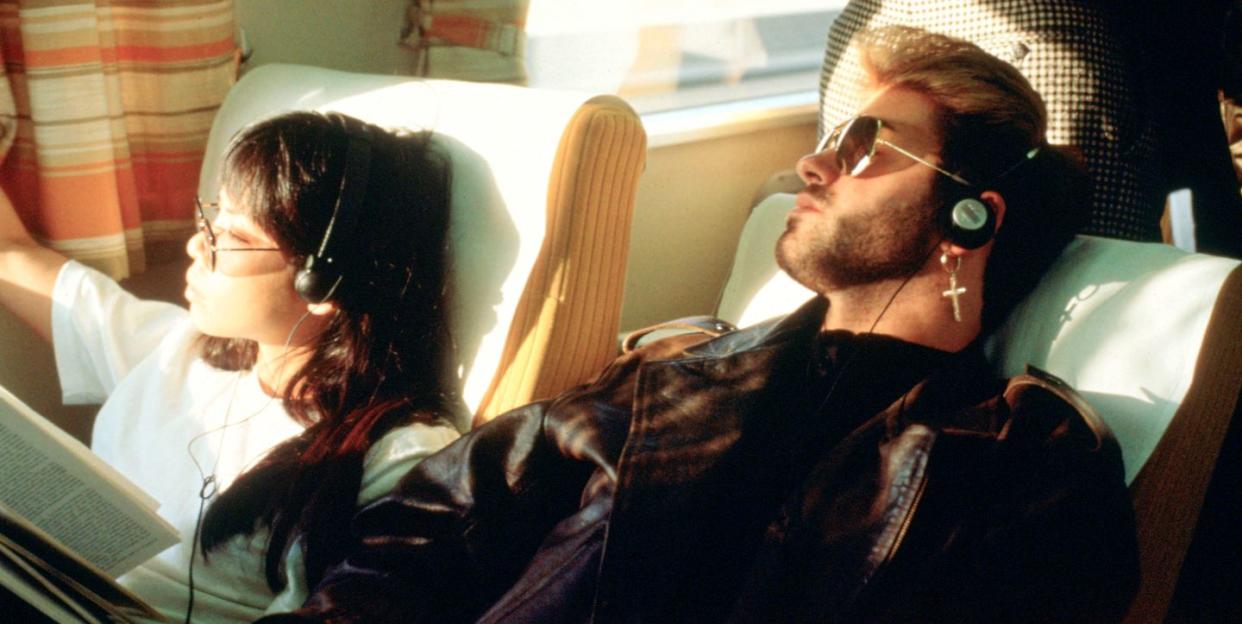The Walkman Enabled Time Honored Traditions of Ignoring Your Parents and Stealing Music

This week, the totemic item of the ‘80s, the must-have for a generation of mixtape-makers, the reason you have to say everything to me twice, the Sony Walkman turns 40. Let us briefly look up from our iPhones and pay our respects.
Like so much of what we consider quintessentially ‘80s-Gary Numan’s “Cars,” Margaret Thatcher, cocaine-the Walkman is technically a 1970s phenomenon. The Sony Walkman TPS-L2 made its debut on July 1, 1979, a nearly one-pound chunk of blue and grey plastic. The music, and I promise you this was a big deal at the time, became portable. The Walkman would allow you to listen to your tunes, at your designated volume level, at your desired location. No more would you have to go stand next to the stereo to listen to your favorite record, like the cavemen and your parents did.
You would slide a cassette tape into one of these babies-either a mass-market product from the record store or something homemade, maybe a collection of songs you’d ripped off the local top-40 station- you would slide those sweat-sodden tin-and-foam headphones over your ears, you would hit play, and then 40 or so minutes later, you’d pull it out, flip it over, rewind to the start of side B, and repeat the process, because auto-reverse wouldn’t be invented until 1982.
You would not, despite what most of the Walkman’s advertising would have you believe, clip the device to your belt. At least not if you were doing any serious running or aerobic dancing, as all that jerking and jostling would make the tape sound wobbly. Sony would fix this problem in 1984 with the release of the highlighter-yellow Sony Sports Walkman, which held up to our rugged outdoor activity and was also waterproof, unless-and I cannot stress this enough-you put it anywhere near actual water. But however you chose to carry it, the popularity of the Walkman dovetailed with the nascent fitness trend in the United States. We took our music with us as we jogged or skied or power-walked, and each outing could have its own little soundtrack, like an adventure movie. And as the Walkman exploded, so did the percentage of Americans who went outside to exercise.
The Walkman also popularized cassettes, and signaled what would soon become a hot American habit: openly stealing from the recording industry. If you had a friend with a cassette deck and a halfway-decent record collection, the entire world of music was open to you. Really only one person in your clique needed to own a particular album, and if you assembled the right people and had a stack of blank Maxell tapes, you could have it all. Plus, you could economize; why buy that whole Quiet Riot album, when you could just borrow your friend’s and tape the two good songs (three if you count “Slick Black Cadillac,” which I do not)?
Music that was too daring for commercial radio in the early ‘80s made its way into my ears via 90-minute cassettes made by cooler kids, and I wouldn’t have known The Replacements, R.E.M. or The Cure any other way. This was not a victimless crime; that first Violent Femmes album achieved Thriller-level saturation among my peers, and I have only seen what the cover looks like maybe three times. Here’s hoping they made up the difference in touring and merchandise. “Home taping is killing the music business,” they told us at the time, and while they weren’t wrong, the underground dissemination of mixtapes did the work their marketing departments wouldn’t. Plus, Shawn Fanning wouldn’t even be born until 1980.
I asked for and received my first Walkman for Christmas, 1983. My father took some time out of a New York City business trip to swing by 47th Street Photo, one of those packed and chaotic electronics stores in the Jewelry District where you can catch a bargain on such things, and got the WM-F2 I specified on my list. I know he did this because I absolutely snooped in his closet and saw the bag. I thanked him by wearing those headphones every waking, non-school moment in the years that followed, the Walkman also enabling the enduring teenage pursuit of ignoring your parents.
As technology progressed, Sony tried to keep up: the Discman attempted to be for compact discs what the Walkman had been for cassettes, but they couldn’t overcome the tragic flaw of CDs being prone to skipping. (Once, I saw a dude running in Central Park, Discman balanced delicately in his raised open palm, like he was a harried waiter hurrying a tray of martinis to an impatient table, and the whole process seemed as stressful and unpleasant as running itself.) The Sony MiniDisc solved the skipping issue, and allowed the user to add, delete and reorder songs at will, but the whole thing came up at the exact same moment as MP3 players, where you could do all of those things plus not pay one red cent for the music, so guess which one was the first to go.
The Walkman didn’t just let us take our music anywhere we went, it allowed us to live inside our own little worlds. You could create your own radio stations with mixtapes, and nobody outside of your own head needed to know about it. And as The Real World fired an early shot across the bough for reality television, the Walkman predicted the rise of iPhone culture, a world where eye contact is as obsolete as a cabinet stereo system.
It probably inhibited our social skills, it was the first domino to fall in the demise of the recording industry, and again, I’m definitely going to need you to repeat what you just said, but as a proud member of the Walkman generation, I tip my headphones.
('You Might Also Like',)

